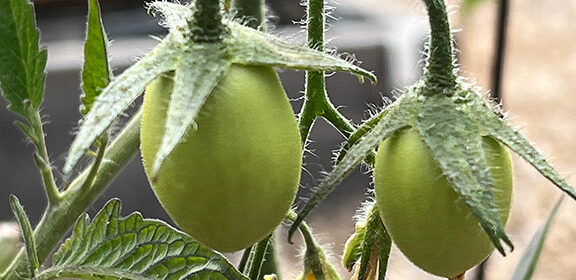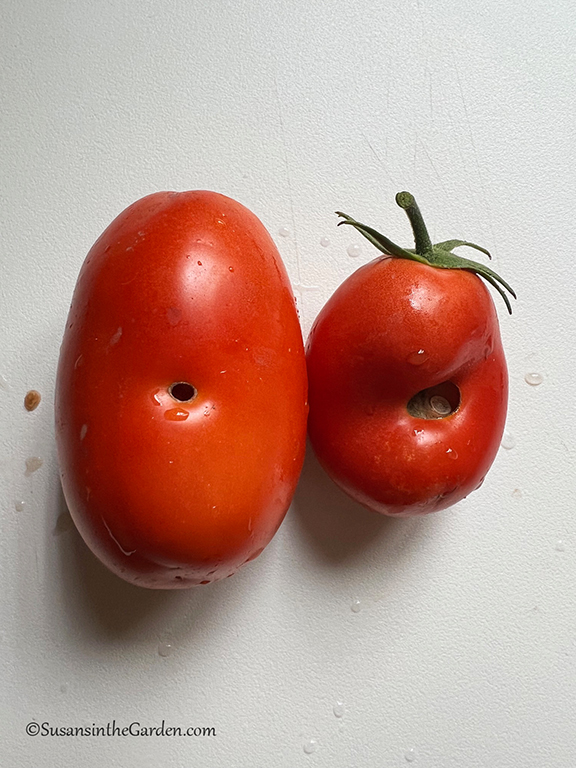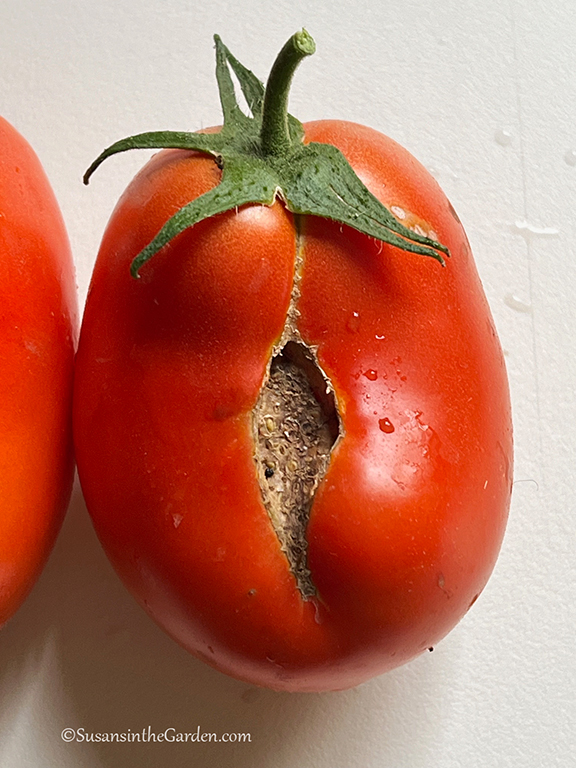Tomato Problems

This year has been a real challenge for gardeners everywhere. Primarily, the problem has been the weather extremes, which have caused some tomato problems that I don’t ordinarily encounter. For the most part, tomatoes and other crops have been very slow to ripen.
The two main tomato problems have been damage from tomato fruitworms and catfacing. Let’s take a look at each:
Tomato fruitworms
Most gardeners are familiar with hornworms. These huge worms cause an amazing amount of damage to both the fruits and the foliage. We’re lucky in that we rarely encounter hornworms in our Spokane, Wash. garden. They’re pretty easy to see, though. With tomato fruitworms, that’s not necessarily the case.
About two months ago, I started noticing a small round hole in a few of my ‘Supremo’ paste tomatoes. I looked at them closely but didn’t see any signs of insects. As a matter of fact, the holes looked more like they occurred during the early fruit development stage. I studied the leaves, thinking I would see chewing damage but couldn’t find any. Hmm. I even cut open a tomato to see if I could spot anything out of the ordinary. But again, nothing was visible.
Fast-forward to about a week ago, when we were finally able to start processing tomatoes for sauce and salsa. More holes that were fairly deep into the fruits and discoloration of the inner tissue. I decided it was time to do a bit of research.
What caused the damage?
It turns out the culprits were tomato fruitworms. Even though I never encountered any of them, the damage was classic. So here is the weird part:
While you might not have heard of tomato fruitworms, they are also known as corn earworms or cotton bollworms. Now they probably sound familiar to you! Many years ago, we used to have a problem with corn earworms. So I know what the caterpillar stage looks like, as well as their damage.
The caterpillars are the larvae of a tan moth with dark markings on its wings. The species name is Helicoverpa zea. The adult moth lays eggs, which hatch into the caterpillars. The latter feed for about a month, then drop to the soil to pupate and later emerge as a moth. The caterpillars begin life as a tan worm, later changing to black or green in color. They have lengthwise stripes and small dots on their bodies.
The frustrating thing was that I was never able to find any caterpillars. And since the moths are nocturnal, that made it pretty challenging to control them! The main purpose this post is to help you recognize the cause of this damage.
How can you control this insect?
What can you do? Well, monitor your crops carefully through the season. If you spot damage, consider spraying the fruits with Bacillus thuringiensis (Bt). This is an organic spray containing beneficial bacteria that target the caterpillars.
I don’t have photos of the adult moth or caterpillar. Here’s a link to some excellent images on the Colorado State University website.
Did you know I have an Organic Insect Control section on this website? Here’s a link to it. And, of course, I’m the author of The Vegetable Garden Pest Handbook, which is all about the insects you would encounter and how to deal with them organically. (the above link is my Amazon affiliate link; if you order it, I will receive compensation but it will not impact the price you pay in the least.)
Tomato catfacing
Now here is something that is similar in appearance to the damage you saw above. But it’s actually a physiological problem, rather than insect damage. What’s a physiological problem? It’s either caused by the weather or by something we did or didn’t do to the plants.
Tomato catfacing can be caused by a number of things:
- Exposure to cool temperatures, which damages a plant’s flower buds
- Excessive pruning of a plant
- Too much use of nitrogen fertilizers
- Inconsistent watering
- Exposure to herbicides
How do I know this is catfacing and not more fruitworm damage? The brown, corky tissue plus the little “zipper” going up the side of the fruit. Those are dead giveaways. Heirloom tomatoes can be quite prone to this but that wasn’t the case with this tomato.
How can you prevent this from happening to your fruits? Don’t plant your tomato seedlings too early. Try not to prune the plants too much. And be sure to provide them with regular watering.
I hope you’ve found this information helpful. Gardening is always fascinating and sometimes a bit of a puzzler!
Don’t miss the vegetable gardening videos on my YouTube channel!



